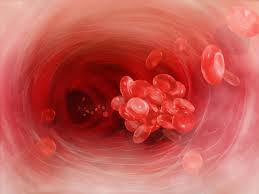VTE Metrics
Let’s just say you decided to make up a quality metric. For example, we will pick what is called venous thromboembolism (VTE) complications after colorectal surgery. And let’s say you paid more or penalized less if there are fewer of these events. What would happen if you did this? Well, the use of VTE prevention (blood thinning) would grow because doctors and hospitals would want more money and less penalties. That is human nature. What also would happen? Well, there would be a chance of more complications from these blood thinners. This all makes common sense except if you are the government or an insurer trying to pay doctors and hospitals less. I have also believe that before we use metrics that have money attached there needs to be proof that these interventions have more benefits than they have risks. Doesn’t that makes sense? Unfortunately, the idiots in charge of healthcare refuse to acknowledge this. Well, the Colorectal Writing Group for the Surgical Care and Outcomes Assessment Program-Comparative Effectiveness Research Translation Network (SCOAP-CERTAIN) Collaborative analysed data for 16,120 patients who had colorectal surgery between 2006 and 2011 at 52 hospitals in Washington state to determine whether the incidence of VTE had changed along with evolving prophylaxis treatment patterns. The results from this JAMA study showed:
- The study found that the incidence of venous thromboembolism (VTE) complications after colorectal surgery is low and remained largely unchanged despite increased use of prophylaxis,
- The use of VTE prevention therapies grew during the study period from 31.6% (323 of 1,021 patients) to 86.4% (3,007 of 3,480 patients) for pre-surgery use and from 59.6% (603 of 1,012 patients) to 91.4% (3,223 of 3,527 patients) for in-hospital use.
- The authors also observed that patients having abdominal operations had higher rates of 90-day VTE compared with patients who had pelvic operations (2.5% vs 1.8%) and those patients having cancer operations had a similar incidence of VTE as those patients having non-cancer operations (2.1% vs 2.3%).
- “Venous thromboembolism remains an infrequent but important complication, and rates are largely unchanged despite increasing chemoprophylaxis use”.
So we got higher VTE prophylaxis but no real benefits from its use. Oh, and we got higher complications. But who cares because the doctors and the hospitals got higher bonuses! Hooray.
For over a dozen years I have been telling you that quality metrics are bogus. This study is just one more to prove that. Even the authors of this study agree:
“Linking VTE rates to reimbursement has the potential to negatively influence patient care. Extended prophylaxis may lead to bleeding complications. Physicians and hospitals may become more reluctant to perform needed imaging procedures when the indications are questionable. Paradoxically, this patient safety indicator may ultimately prove to be detrimental to patient care. In an era where quality measures and outcomes are increasingly being linked to reimbursement and economic burden, thoughtful consideration should be given to ensure that truly modifiable and well-understood outcomes are the driving force for health policy.”










Hurrah! As an orthopedic surgeon we are taught from the beginning the dangers of VTE. We also knew that preventing them was a balancing act between prevention and bleeding. When VTE became a “never event”, and the bleeding did not, it should have come as no surprise that there would be very little upside but a lot of downside. Also, I don’t anyone asking me what I thought would be the best compromise.
I am convinced that years from now people are going to wonder what we were thinking.